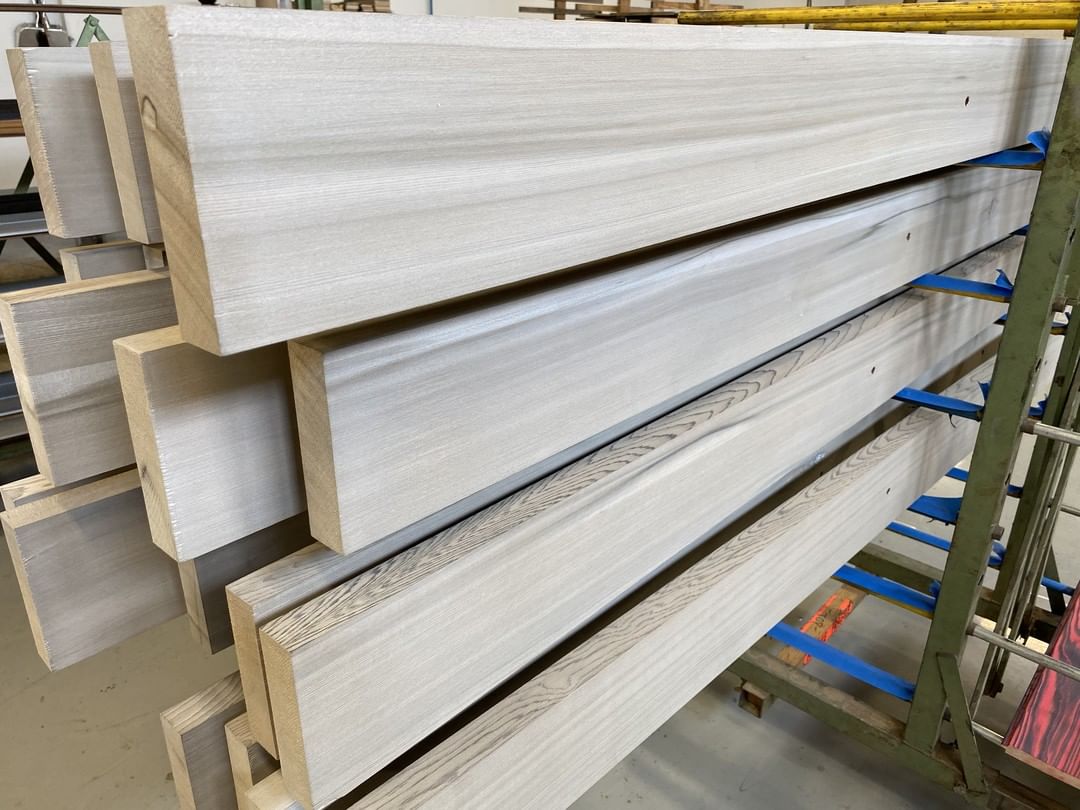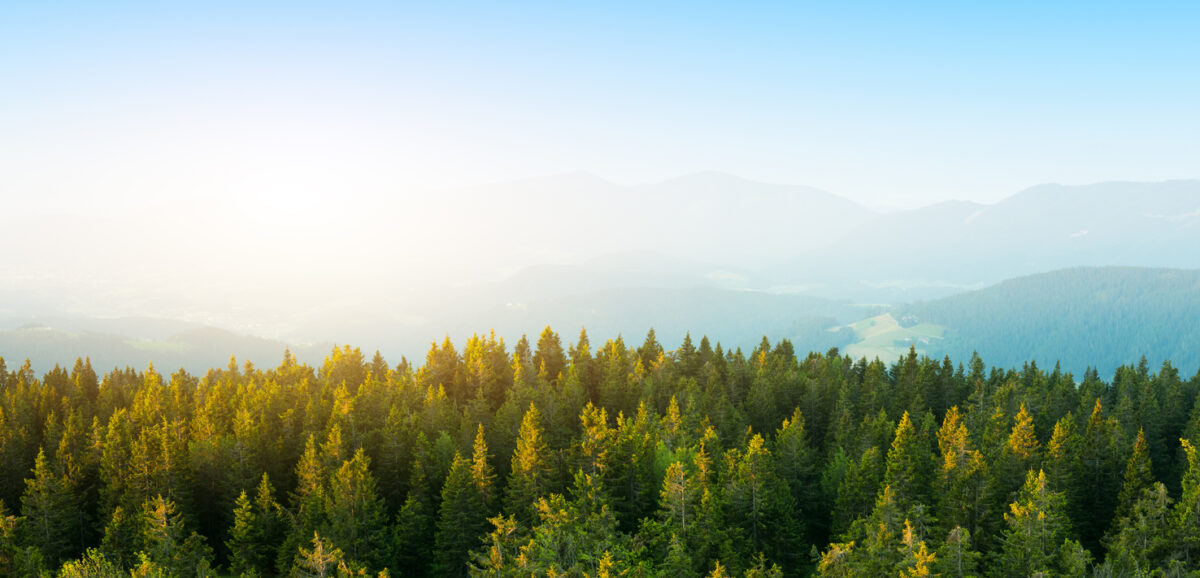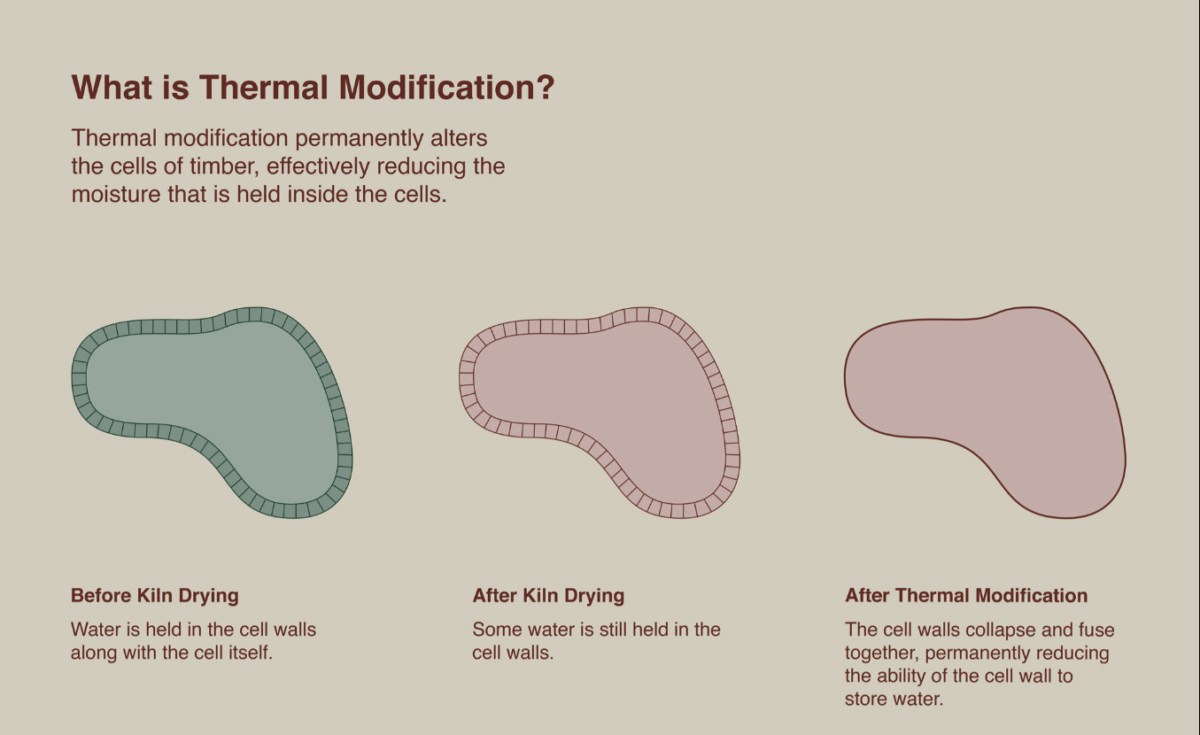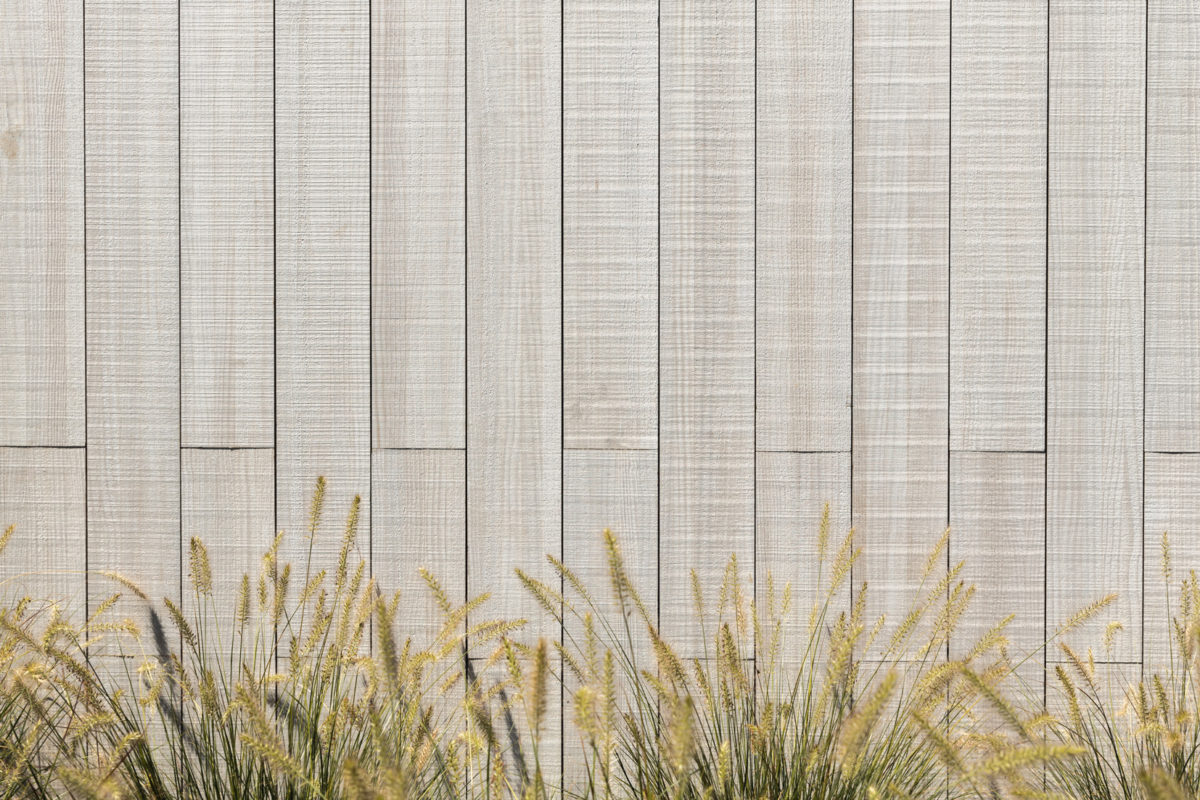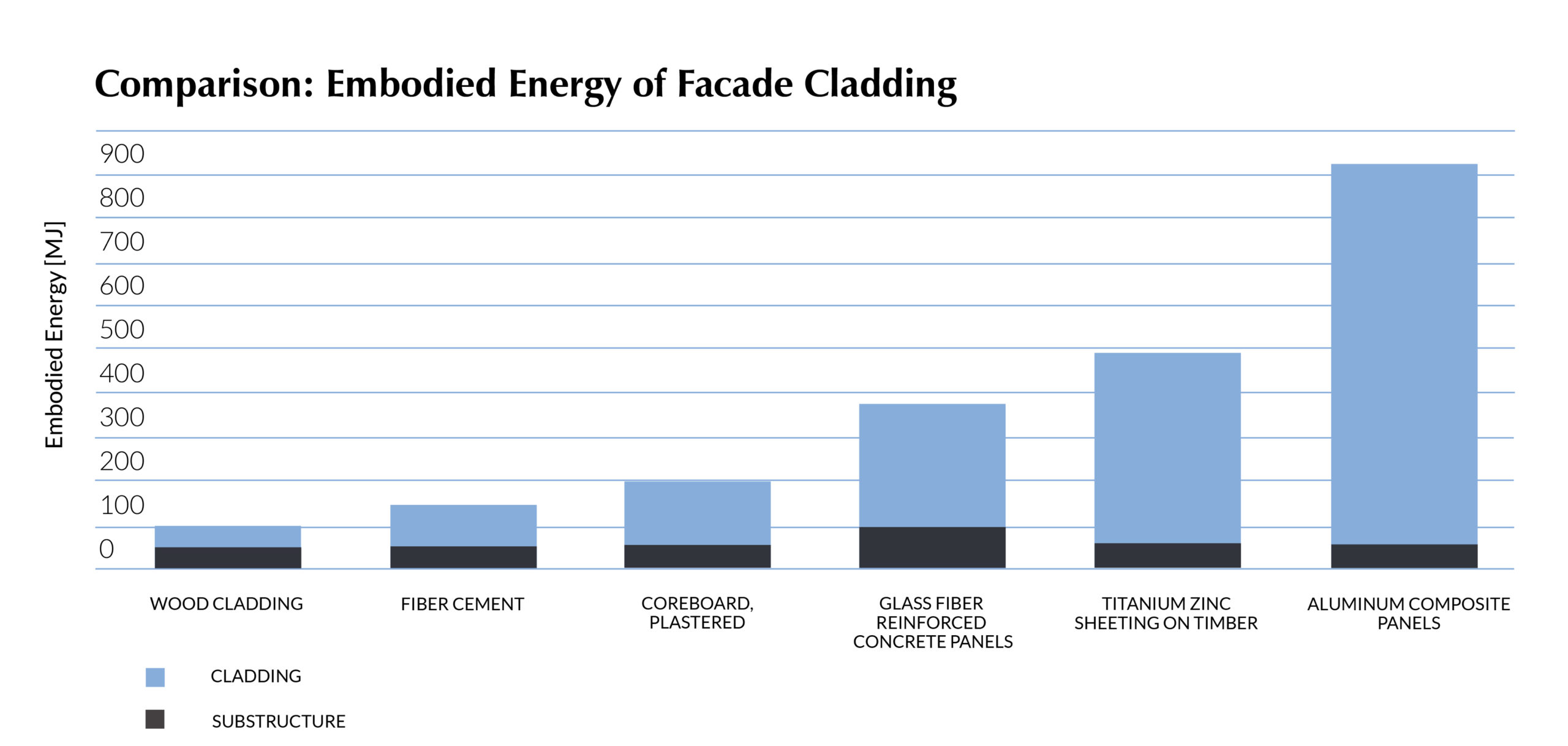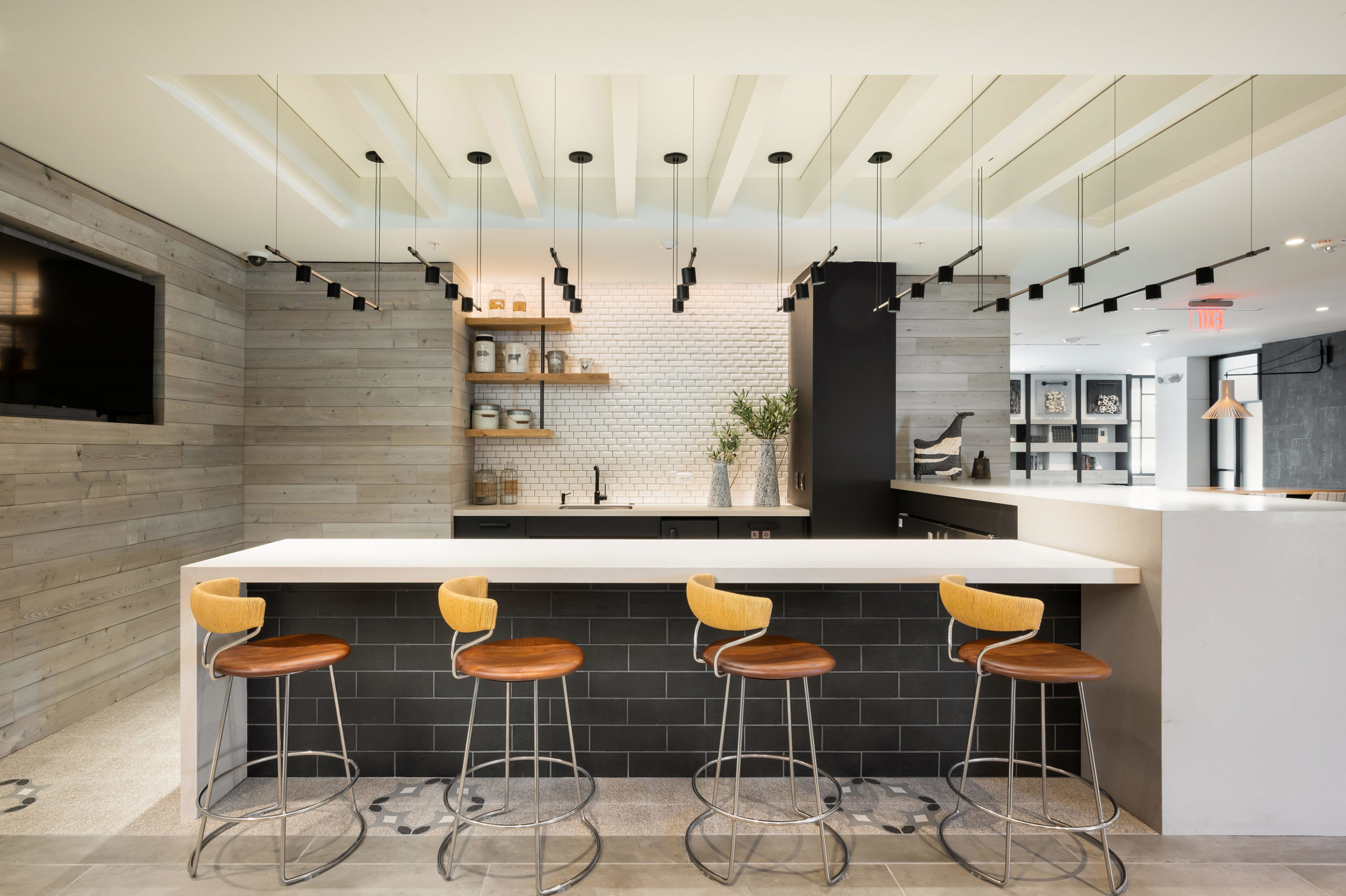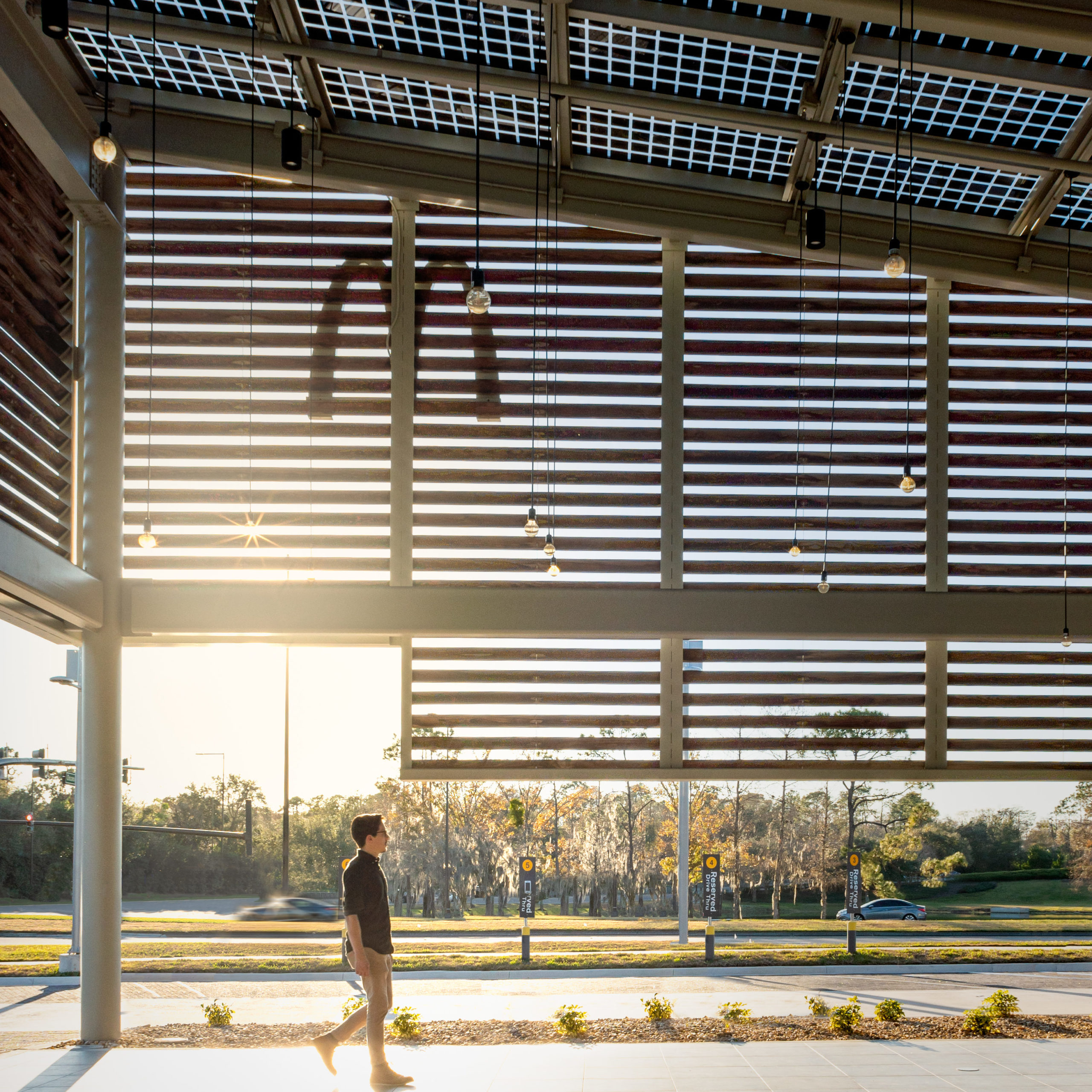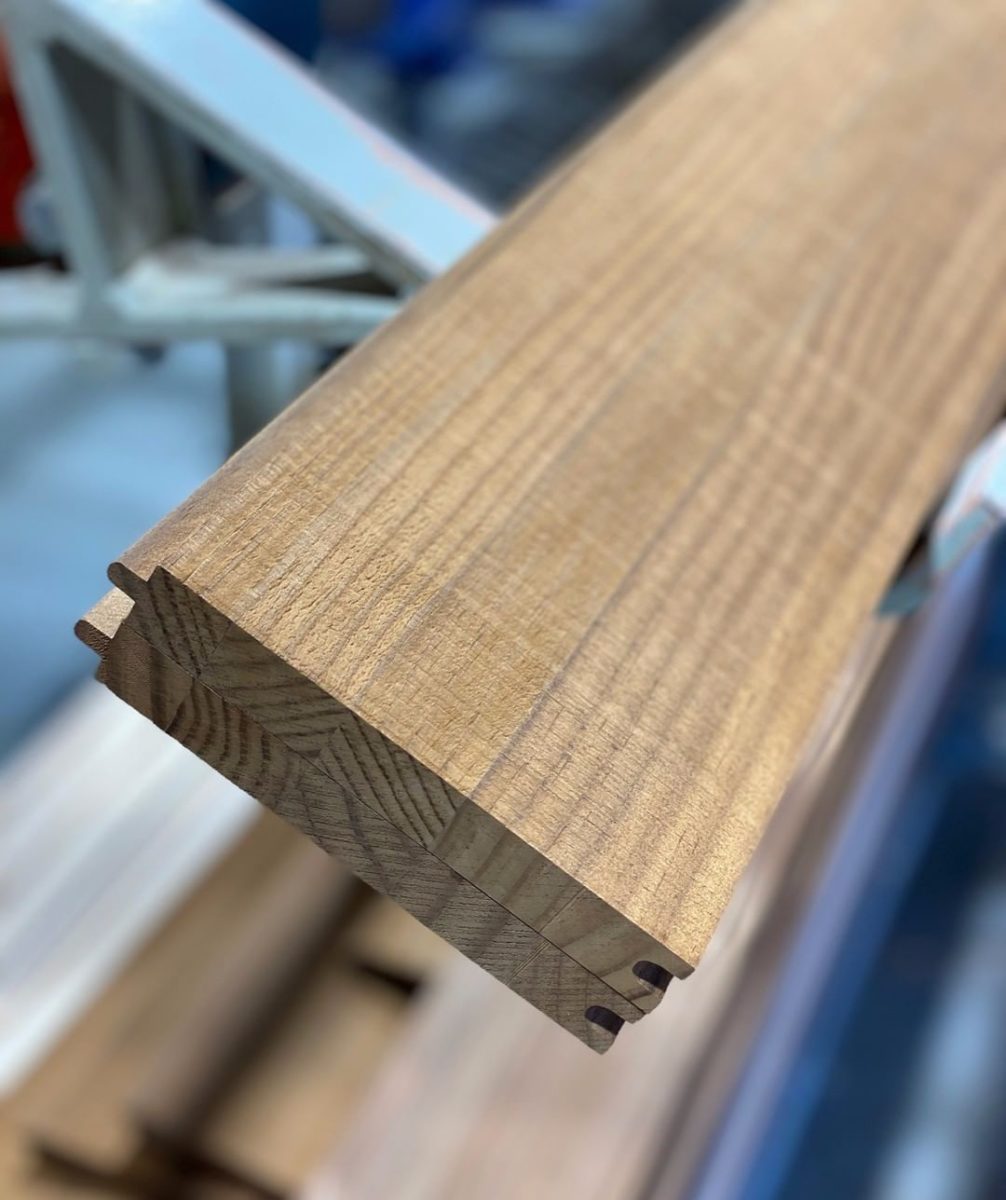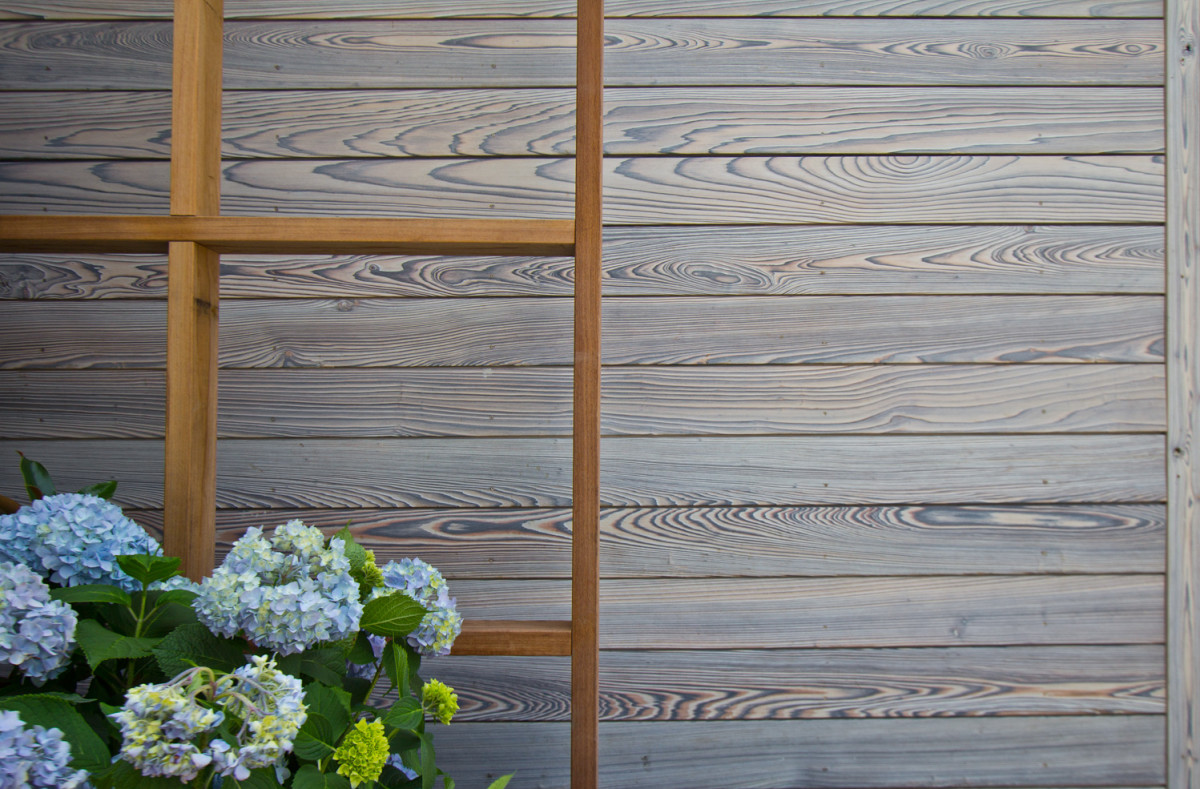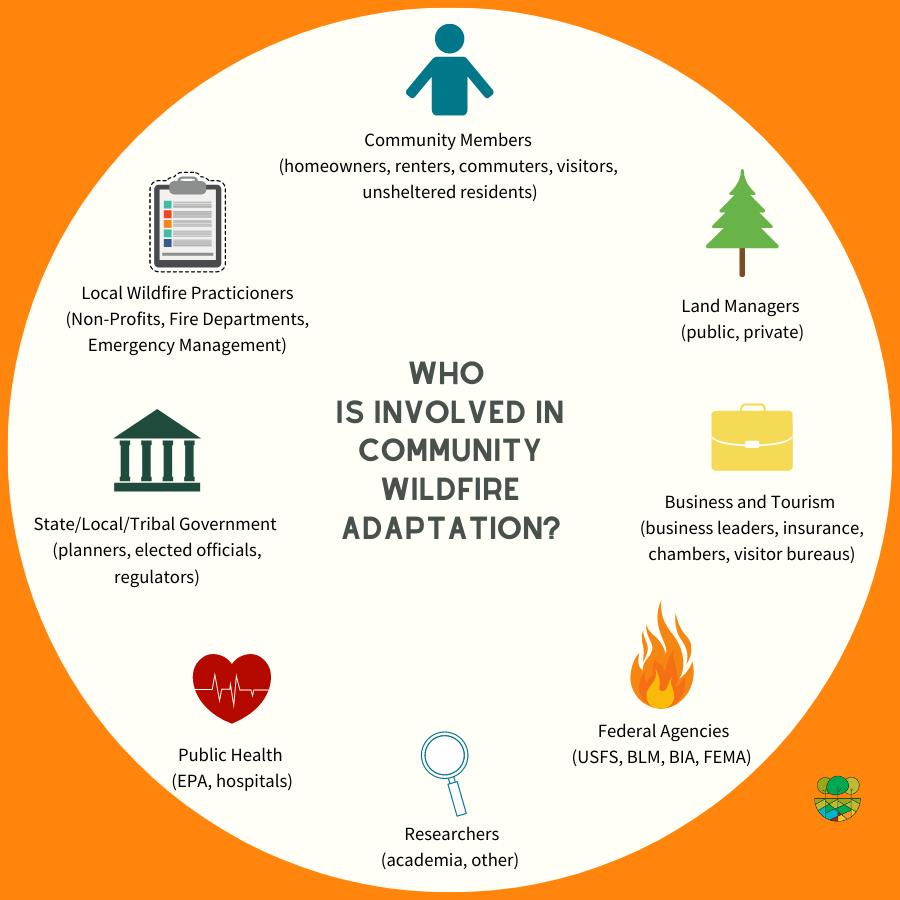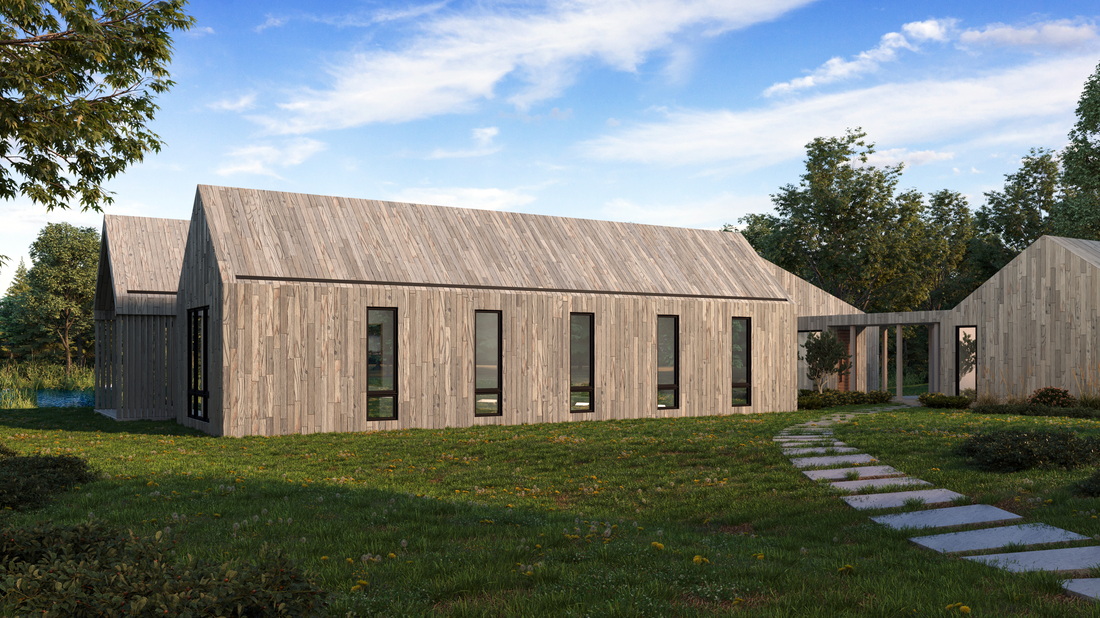Wood is one of the earth’s most renewable resources and has a low environmental impact compared to alternative building materials that are often used during the construction process. We believe if architects and builders want to provide clients with high-quality, sustainable building materials that will last over the lifespan of the structure, they must choose high-quality materials. We invest in quality, sustainably rich materials like Alaskan Yellow Cedar, so end users can rest assured that their cladding is going to last for many years to come. In this article, we will discuss the benefits of one of reSAWN TIMBER co.’s most specified product, WILLIWAW Alaskan Yellow Cedar (AYC).
Benefits of WILLIWAW
WILLIWAW features pre-weathered Alaskan Yellow Cedar that is sourced anywhere from Alaska to Oregon and is intended to provide a high-performing, natural material with a clean weathered aesthetic.
- WILLIWAW can be used for interior or exterior wall cladding and is available in clear vertical grain. Clear vertical grain Alaskan yellow cedar contains few character marks.
- WILLIWAW is durable, dimensionally stable, resistant to rot and insects, and has a light tan/gray, weathered look.
- WILLIWAW can be treated to Class A Fire Rating for Interior Applications.
- WILLIWAW is known for its ability to withstand harsh weather conditions, coupled with its aesthetic appeal, making it a favored choice for both functional and decorative applications in various architectural and design projects.
- Each WILLIWAW product is meticulously crafted to showcase the natural characteristics of the wood, such as grain patterns, and color variations.
- As a natural building material, wood cladding weathers inconsistently and can be unpredictable. WILLIWAW provides an exterior material with minimal aesthetic variation regardless of UV exposure.
- WILLIWAW is designed to be versatile and can be used in both high-end residential and commercial settings.
The combination of expert craftsmanship, sustainable practices, and the inherent beauty of wood makes WILLIWAW a popular choice among designers, architects, and homeowners looking for exceptional wood products.
Why WILLIWAW?
reSAWN TIMBER co. offers a variety of Alaskan Yellow Cedar options that all contain the incredible benefits of this species. WILLIWAW not only has all of those benefits, but is loved for its natural variation, pre-weathered features, and low maintenance.
From afar, WILLIWAW exhibits a light beige color with gray undertones, making it unique looking in every kind of lighting. Its color compliments every environment it’s surrounded by whether it’s mountains or beaches, sun or snow, it provides a natural look as if it has always belonged there. The natural color variations in Alaskan Yellow Cedar wood are primarily due to the wood’s interaction with minerals found in the soil of its growing environment. As the tree absorbs water and nutrients from the soil, it also absorbs trace amounts of minerals present in the surrounding environment. These minerals can include iron, copper, manganese, and others, each imparting its own color properties to the wood. The mineral composition of the soil plays a crucial role in determining the color variation.
WILLIWAW is prefinished in plant-based, zero VOC finish, allowing it to accept and hold finishes with minimal aesthetic variation throughout its installation lifecycle. reSAWN’s products arrive at job sites prefinished to avoid minor mishaps that can occur on job sites like oversprays, streaks, drips, or lap marks. Drying racks that are used to hold wet cladding on a job site are costly and take up much-needed space. Prefinished wood materials like WILLIWAW are finished and dried in a controlled environment prior to arriving on a job site. With factory-finished products, they have already undergone quality control, inspection, and back coating to ensure the material is in perfect condition before it arrives at its destination.
WILLIWAW is offered in a clear vertical grade, meaning the growth rings are parallel to each other on the face or the board, and very light skips on the non-graded face. Architects and builders often seek out select grades because it has very few imperfections or character markings, making it look smooth and clean. Additionally, WILLIWAW is utilized for both interior and exterior purposes, making it versatile and flexible for all styles of design.
WILLIWAW is currently being installed on homes in different climatic zones across the country in South Carolina, Minnesota, California, Florida, and Canada. Below is the Red Mountain Residence in Aspen, Colorado on its way to completion.
What is Alaskan Yellow Cedar?
AYC is a remarkable species that is located in the coastal regions of Alaska, British Columbia, and the Pacific Northwest of the United States. It is grown in climates that have mildly wet winters, and cool damp summers. This species is often found on higher elevations and thrives in diverse forest ecosystems.
Unfinished AYC exhibits a pale yellow to golden color, often with subtle streaks of reddish brown, which deepen and become richer with age and exposure to sunlight. In addition to its physical attributes, the species possess a pleasing aroma that emanates from the wood, which adds to its allure and sensory appeal. Its scent is often described as sweet, reminiscent of cedar and citrus.
Alaskan Yellow Cedar Benefits
At reSAWN, our Alaskan Yellow Cedar products like WILLIWAW are ideally suited for any interior and exterior project, including wall and ceiling cladding. With its versatility, comes many remarkable benefits.
- Durability– AYC has exceptional resistance to decay, rot, fungi, and insect damage. Due to their natural extractives such as Thujaplicans and Phenolics, they act as a defense mechanism for decay-causing organisms and pests. The natural oils also act as a natural barrier against moisture, helping to repel water. This contributes to the long lifecycle of the wood.
- Strength– The low density and compact characteristics of the species make it more resistant to wear, impact, checks, and twists. Additionally, its straight grain pattern contributes to the strength of the wood. The fibers in AYC run parallel to the board’s length, providing structural integrity, making it less susceptible to shrink, and enabling it to withstand various environmental and structural stresses.
- Insulation– The species’ tightly packed fibers and low density allow the wood to be thermally insulated.
- Fire Resistant– When exposed to fire, AYC tends to have a slower burn rate. It releases heat at a slower pace and retains its structure for a longer period. reSAWN’s AYC has a Flame Spread Index of 40 and a Smoke Developed Index of 140, giving it a Class B Rating.
Our Mission
The building industry continues to produce unsustainable materials to mimic the aesthetic of wood and advertise them as sustainable products. However, some contain toxic chemicals, are unethically manufactured, and have a short lifespan because it is less expensive to do so. Additionally, their life cycle produces a mass of carbon emissions whereas products like WILLIWAW act as a carbon sink, absorbing carbon from the atmosphere.
At reSAWN TIMBER co., we bear the responsibility to become mindful educators, while nurturing and preserving earth’s ecosystems, cherishing its biodiversity, and embracing sustainable practices. We provide sustainably sourced products that will look beautiful on day one and continue to weather as nature takes over, with little to no aesthetic maintenance needed. This leaves more time to enjoy the product and less time to maintain it.
What does it truly mean to be an environmentally conscious wood manufacturer? In an industry that runs on nonrenewable, disposable resources beyond what is necessary, healthy, or sustainable, we choose to change the narrative. At reSAWN TIMBER co., we research, study, and observe every product we sell to not only protect our planet, but future generations. We carefully craft quality products that are durable and sustainably sourced to keep our promise to nature and end-users.
There is a reason why WILLIWAW Alaskan Yellow Cedar continues to be one of our most specified products. It is durable, dimensionally stable, rot and insect resistant, versatile, and exceptional at withstanding all weather conditions. Architects and builders continue to choose WILLIWAW for their projects because it promises to keep a home aesthetically beautiful and safe for years to come.
Want to see how WILLIWAW will look on your next project? WILLIWAW samples are available for architects and designers at no cost and shipped via UPS Ground. Click on the button to get started.







